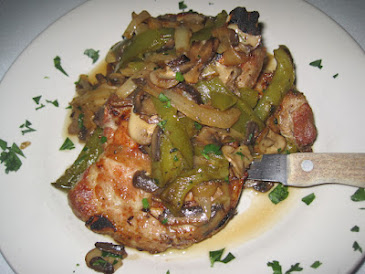Bernini’s Terracotta Models Illuminate His Unique Creative Process in Met Museum Exhibition Opening This October Exhibition Dates: October 3, 2012—January 6, 2013 Exhibition Location: Robert Lehman Wing, court level
To visualize life-size or colossal marbles, the great Baroque sculptor Gian Lorenzo Bernini (1598-1680) began by rapidly modeling small clay sketches. Fired as terracotta, these studies are bold, expressive works in their own right. Together with related drawings, they preserve the first traces of Bernini’s fervid imagination and unique creative process that evolved into some of the most famous and spectacular statuary in Rome, including the fountains in the Piazza Navona and the angels on the Ponte Sant’ Angelo. Bernini: Sculpting in Clay will feature 50 of these terracotta sketch models, shown together for the first time, with 30 drawings. Due to unprecedented loans especially granted for this occasion, the exhibition will be the first to retrace Bernini’s unparalleled approach to sculptural design, and his use of vigorous clay studies and drawings in directing the largest workshop of his time. The exhibition will offer viewers a more profound insight into the artist’s dazzling creative mind, and his impact on the fabric of Baroque Rome.
The exhibition and catalogue are made possible by the Iris & B. Gerald Cantor Foundation.
The exhibition was organized by The Metropolitan Museum of Art, New York, and the Kimbell Art Museum, Fort Worth.
Gian Lorenzo Bernini was the most famous and important sculptor in 17th-century Europe, best known for his stunning works in marble that still decorate many of the churches and piazzas of Rome today. Bernini examined problems of construction and design by modeling damp clay with his fingers and tools with incredible dexterity. He used these studies and related drawings to decide carefully on the perspective of his majestic compositions. Bernini: Sculpting in Claywill present an overview of his exceptional career and showcase his full range as a modeler by assembling almost all of his surviving terracottas, including 15 from the Harvard Art Museums, the largest collection of Bernini terracottas in the world, on loan for the first time.
Bernini’s liveliest terracottas divulge an impassioned imagination and also raise the curtain on the practical side of sculpture-making. Unlike his contemporaries, Bernini often fashioned his clay figures in groups, and the two such groups that survive will be recreated in the exhibition. Occasionally, he also presented more finished models to his patrons to win commissions or to his assistants to use as guides in carving. The exhibition will also treat the role of drawing in Bernini’s design process and, where possible, the drawings and the models to which they relate will be displayed together. These juxtapositions will make clear the evolution of Bernini’s own works, as he shifted between media, and will allow visitors to follow the many steps of his creative process. Significant clay studies by his closest assistants will also be on display to illustrate the practice of sculpture production in his studio.
Bernini: Sculpting in Clay will include other outstanding loans from international museums such as the Musée du Louvre, Paris, the Vatican Museums, the Museo del Palazzo di Venezia, Rome, the Galleria degli Uffizi, Florence, the Victoria and Albert Museum, London, and the Royal Collection at Windsor Castle. Many of these loans have never been seen in the United States. Highlights will include a dynamic terracotta model for the lion (ca. 1649-50) destined for the base of the Four Rivers Fountain in the center of the Piazza Navona in Rome; the series of models for the Angel with Superscription (1668-69); the Moor (1653), Bernini’s largest surviving model; and drawings and clay sketches for the Kneeling Angels (1672) on the Altar of the Blessed Sacrament in Saint Peter’s Basilica.
Curators for the exhibition are: Ian Wardropper, Director of the Frick Collection (guest curator); Anthony Sigel, Conservator of Objects and Sculpture, Straus Center for Conservation and Technical Studies, Harvard Art Museums (guest curator); C.D. Dickerson, Curator of European Art, Kimbell Art Museum; with Paola D’Agostino, Senior Research Associate at The Metropolitan Museum of Art.
Bernini: Sculpting in Clay will be accompanied by a richly illustrated catalogue that will present the results of new research. The publication will feature essays by Ian Wardropper, C.D. Dickerson, Andrea Bacchi, Tomaso Montanari, Steven Ostrow, and detailed catalogue entries by C. D. Dickerson and Anthony Sigel. Sigel is also the author of an illustrated glossary that will be included in the catalogue.
An audio tour, part of the Museum’s Audio Guide program, is available for rental ($7, $6 for Members, $5 for children under 12).
The Audio Guide is sponsored by Bloomberg.
A variety of education programs will explore the techniques, ideas, and historical context that informed and shaped Bernini’s works. Highlights will include gallery talks, studio programs, films, and a Sunday at the Met program on December 9.
The exhibition will be featured on the Museum’s website at www.metmuseum.org.
After its presentation at the Metropolitan Museum, Bernini: Sculpting in Clay will be on view at the Kimbell Art Museum, Fort Worth, from February 3 through April 14, 2013.































































































